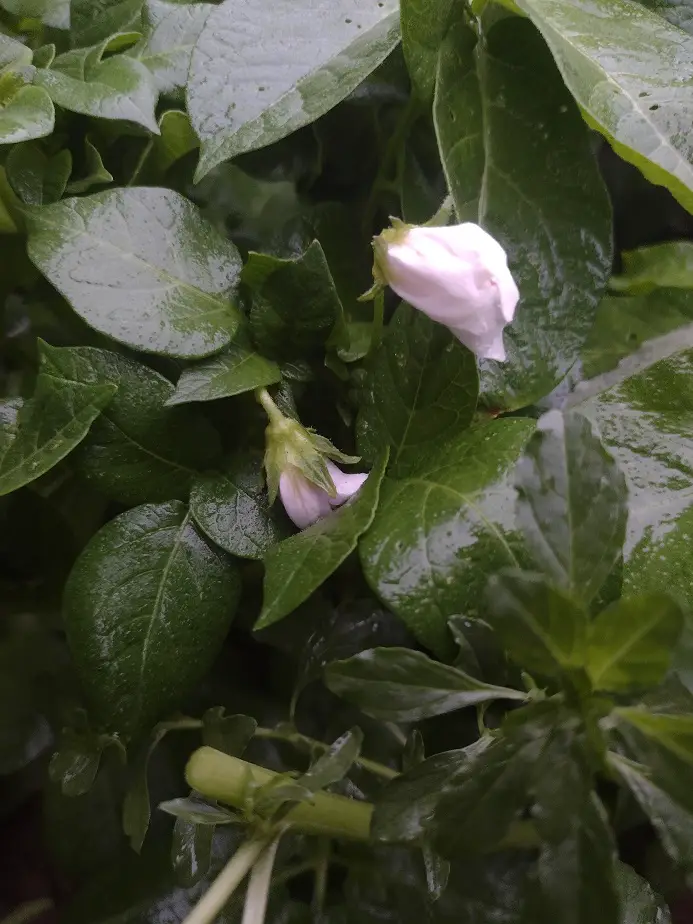Potatoes are one of the more important crops for homesteaders. For us, getting a good harvest means filling the pantry for winter.
Potatoes don’t need full sun, but it helps them yield a better harvest. In northern climates, 12-14 hours of sun (no shade) is ideal. In hot climates, afternoon shade can help potatoes survive the heat. Potatoes grow best in full sun (12+ hours), in a cool climate, and with a growing season of over 100 frost-free days.
How Much Sun Do Potatoes Need?
Potatoes usually need 8 hours of sun a day to produce strong vines. They can be grown in less sun, but the plant will suffer stunting and the harvest will be small. Potatoes grown in too little sun will suffer more disease, and be more susceptible to pest damage.
Potatoes like as much sun as they can get. The more sun the better. The more solar energy they soak up, the more photosynthesis they can undertake and the more the plant can grow. It takes a lot of photosynthesis to convert sun, water, and fertilizer into a set of big potatoes.
The only issue is that potatoes also can’t take much heat. That’s why potatoes are best grown in a more northern environment like Montana, Michigan, or Main. The northern states have long summer days, and cool enough temperatures to keep potatoes happy.
I’ve not grown potatoes in the full Michigan summer sun of 12-14 hours. Mine usually get closer to 10 hours of sun and they do pretty well. Our trailer house and the woodline block the summer sun in most of the garden until 9 or 10 am, so they can usually get direct sun from about 9:30 am to 8:00 pm or so.
The woods across the road block out the last 2 hours of sun each day. If I had an open field will all-day direct sun, I’d expect a 25 percent increase in potato yield. That may not sound like a lot, but when planting 800 potato plants, that’s about 800 pounds additional harvest, or a pound per plant.
Growing potatoes in all-day full sun is ideal, but sometimes we have to compromise and make the best of what we have. Potatoes grown in the all-day sun will use a bit less water, which is a plus in drought-prone areas.
I’ve grown potatoes in both 8 hours and 10+ hours of sun a day. The average harvest for my Northland Red potatoes was 2 pounds per plant in 8 hours of sun, and 4 1/2 pounds per plant in 10+ hours of sun. Potatoes like the extra few hours. Give it to them if you can.

Growing Potatoes in Partial Shade
In hot climates, potatoes can be grown in partial shade to shield them from heat stress. Potatoes don’t tolerate heat well so morning sun and shade in the afternoon can help potatoes to survive. If less than 6 hours of direct sunlight, potatoes will grow very poorly and may get sickly in any climate.
In Michigan, We really need 8-10 hours of sun for decent potatoes. We have a lot of cloudy weather, and the sun isn’t as strong as it is further south. I don’t think I could grow potatoes with partial shade, or less than 8 hours of sunlight.
In climates with stronger sun and clearer days, partial shade with 6 hours of direct sunlight may be enough for a half-decent potato crop. If that’s all you have, it’s worth a try.
Potatoes can be killed off by heat in 100-degree weather. Growing potatoes on the East side of a shed or house will allow them the cooler morning sun and keep the heat off in the afternoon when the ground really starts to heat up.
What really gets potatoes is when the soil heats up. When the roots get hot, the plants suffer. That’s why potatoes are usually planted close together, to shade the soil. In a well-planted potato patch, you can’t walk through it without stepping on a potato vine with every step.
In hot climates, you have to work extra to grow good potatoes. A big part of it is really, just planting them as early as you can. When planted as early as possible, you stand a much better chance of beating out the heat and getting a decent harvest. Also, plant no further than a foot apart in a row, 2 feet between rows.
It’s hard to get past that. Potato tubers simply don’t bulk up in the heat. That’s why the sweet potato, not related to regular potatoes, is the popular choice for hot areas. Watering mid-day can help quelch the heat on the plants and in the soil. Watering lightly every day can help potatoes in hot weather areas.
To learn more about watering potatoes see this article: Do Potatoes Need a lot of Water?
If you can find 90 days of cool weather without a chance of frost, you can grow some decent potatoes. Potatoes can be planted while there’s still a chance of frost or even a good freeze. When the plants first emerge, they can handle one light freeze without suffering much harvest loss.
You can figure on planting potatoes a month before the last frost date, and hopefully having some decent, not too hot weather for 2-3 months after emergence. A few of the more somewhat heat tolerant potato varieties are Superior, Chieftan, Eramosa, and Belmont.
Still, excessive heat causes a 50-80 percent reduction in harvest weight of the most heat-resistant potatoes. According to this study done in Canada, potatoes grown in a steady daytime temperature of 95 degrees F yield 70 to 90 percent lower harvest weight than the standard harvest quotas.
Related articles:

